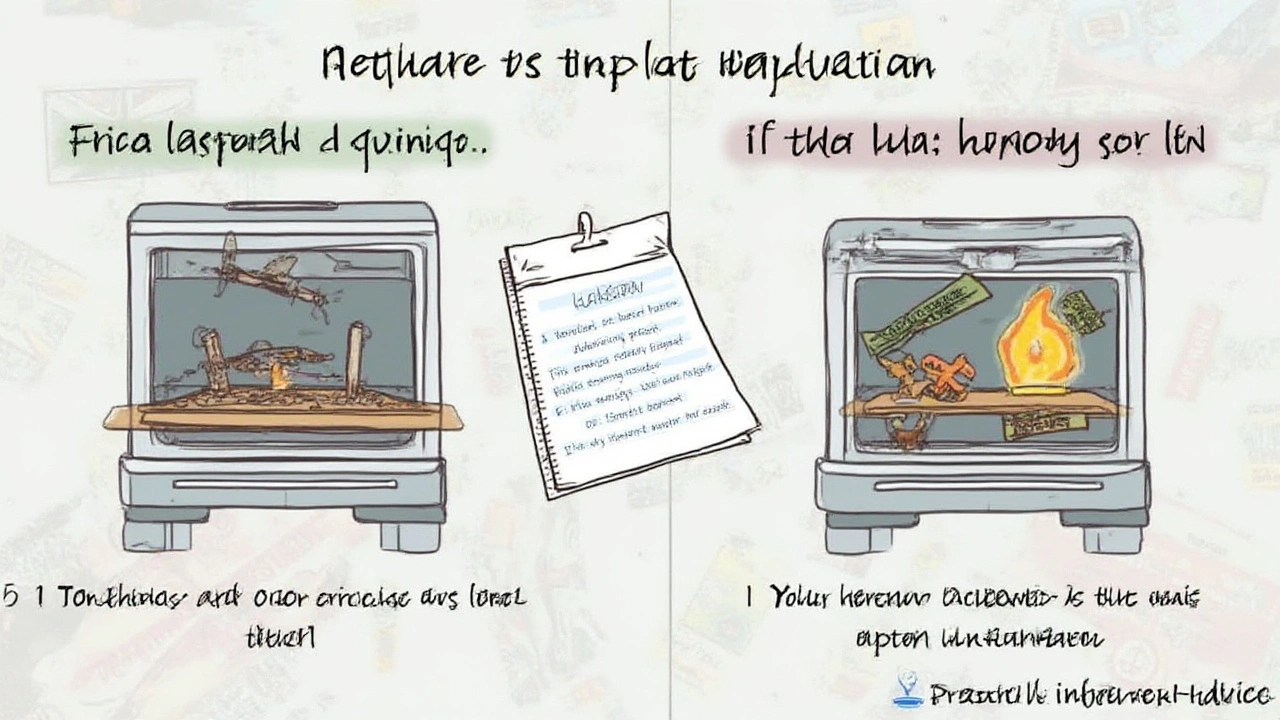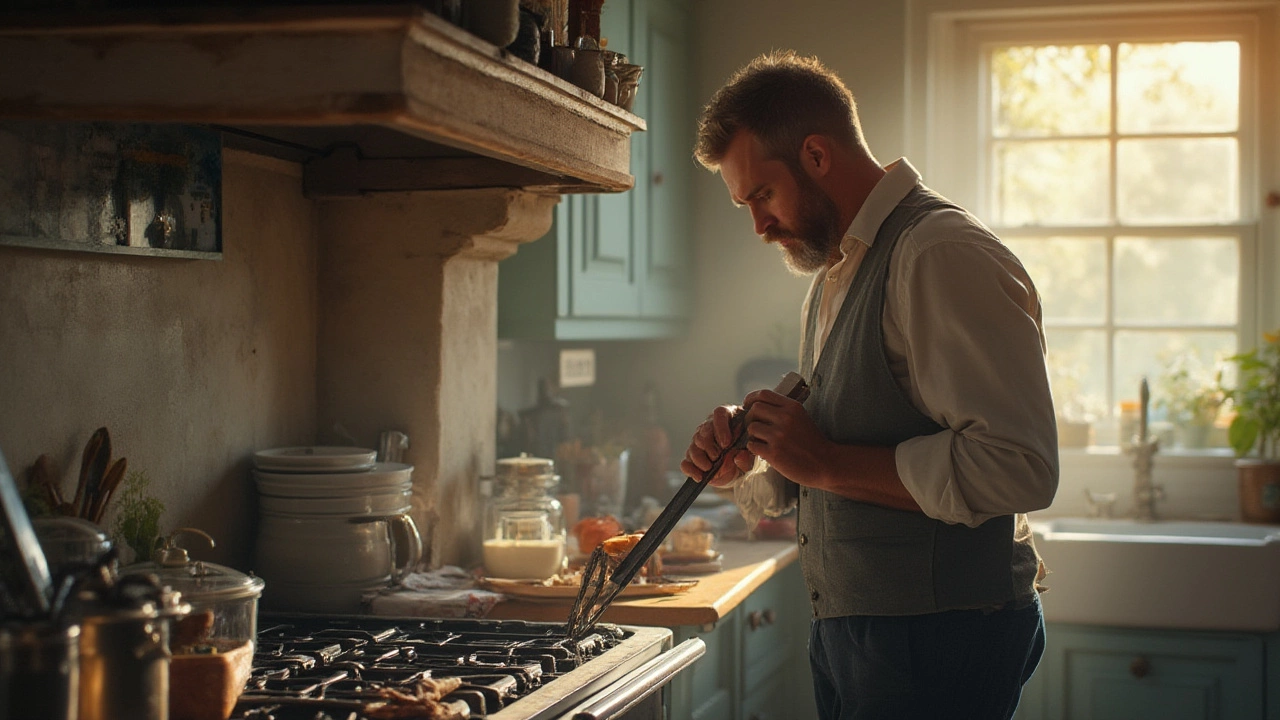Ever been halfway through pizza night when your gas oven suddenly goes on strike? It’s enough to test anyone’s patience—and it’s not just about dinner. A broken oven has a habit of making ordinary moments, like baking birthday cakes or warming school lunches, feel like small emergencies. So you’re left staring at this stubborn appliance, torn between calling the repair service or just giving up and shopping for a new one. The answer isn’t always obvious, but you’re not alone in wondering if saving your oven is worth the hassle and money.
Common Problems and Red Flags: Knowing What You’re Dealing With
Before you even touch your wallet, let’s talk about what usually goes wrong with gas ovens. Some issues are simple: the igniter won’t spark, the burner flame fizzles out, or the temperature is all over the place. Sometimes, it’s easy to spot—my daughter Zinnia once found melted crayon bits near the oven igniter after an ‘art experiment’. That's a quick clean-up mission. But sometimes, the signs are sneakier. Maybe you’ve noticed your oven struggling to preheat, gas smells (never ignore those), or mysterious clicking noises.
If your oven won’t turn on, there’s a good chance it’s the igniter, which actually wears out over time—a very common fix. Or maybe the oven isn’t holding heat—this could be a faulty thermostat. According to a 2023 survey from Consumer NZ, nearly 41% of gas oven owners needed at least one repair within five years, with igniter troubles leading the pack. That says a lot about what you might face as your oven ages.
Knowing what’s wrong helps you decide if it’s a simple job or a sign of bigger problems. Look for clear patterns: is it something small every time, or is a new problem popping up every month? For example, multiple gas leaks or electrical faults point to deeper trouble, and that’s where the smart bet might change from repair to replacement.
But even with basic problems, never skip safety checks. Gas is unforgiving—one leak or wrong move can put your home and family at risk. It’s always best to bring in a certified professional for anything that smells or looks off-routine. “Never attempt to repair a gas leak yourself,” warns Energy Safety NZ. That’s just not a corner worth cutting with kids around.
Consider the Costs: Repair Bills vs. Buying New
Money talks, especially when you’ve got a household budget to balance, school trips to fund, and those surprise expenses (like when Milo’s football broke the living room lamp). So, how much will fixing a gas oven set you back, and when does it start making sense to just buy a fresh one?
In New Zealand, a typical repair bill for a standard gas oven might land anywhere from $160 to $500, depending on the part. An igniter replacement? Around $180 to $300, including callout fees. But if you’re staring at a fried control board or a gas valve, the cost can double or even triple—especially if the model is older or the parts are imported. Some brands like Fisher & Paykel are easier to service because parts are available locally; others, not so much.
Let’s not forget the hidden costs: time spent waiting around for the technician, takeaway dinners stacking up while the oven is offline, and maybe even repeat repairs if the first fix doesn’t stick. If fixing the appliance costs more than half the price of a new oven, experts usually suggest cutting your losses. As a 2024 Choice Australia report puts it,
“If the cost of repair is more than 50% of the price of a new oven, buying a replacement is often the smarter long-term choice.”Just check prices from local stores: you can get a new basic gas oven for around $900–$1,200, with mid-range options stretching up to $2,500.
Toss in the potential for better energy efficiency and fancy features (self-cleaning, air fry modes, digital controls)—the argument for upgrading can start to look pretty solid. I still remember the first time I swapped out our ancient model: lower gas bills made the sting of the new purchase hurt a lot less over time.

Hidden Risks and Benefits: Life With a Repaired Oven
Sure, saving money is great, but there’s more on the line with gas. Old or poorly maintained ovens can leak carbon monoxide, a silent threat you won’t spot till you feel dizzy and sluggish—especially dangerous for kids like Milo and Zinnia, whose bodies absorb that stuff much faster than adults. The most recent Building Code safety updates in NZ (mid-2024) made CO detectors a near-must for every kitchen that uses gas. That alone should remind you how high the stakes can be.
Getting a repair done right—by a licensed electrician or gas fitter, not a dodgy ‘mate from the pub’—can stretch your oven’s life and keep it safe for years. Small fixes (gaskets, seals, igniters) restore performance and slash the chances of leaks or unplanned breakdowns. But repairs have limits. Older ovens (anything past 10-12 years) start showing their age—thermostats lose accuracy, parts snap more easily, and each new fix might only buy you a few more months of peace.
On the bright side, a successful repair is a win for your wallet and the planet. You’re keeping big metal goods (and their packaging) out of Wellington’s landfills. That’s something to feel good about, especially when your kids quiz you about recycling.
But keep an eye on reliability. If every big family dinner turns into a ‘will it/won’t it’ drama with your oven, stress and inconvenience start to outweigh any savings. My tips? Schedule annual maintenance with a certified pro, clean the burners regularly, and install a carbon monoxide detector if you don’t have one already. It’s like insurance—boring until you really need it.
Should You Fix or Replace? How to Decide for Your Own Situation
This is where things get personal. No one’s household is the same, so the choice between fixing or replacing a gas oven boils down to some real questions. How old is your oven? If it's under 7-8 years and hasn’t had too many issues, fixing a worn part might be an easy win. If you’ve already thrown good money after bad—multiple repairs, regular breakdowns, or nagging safety worries—ditch it.
Think about usage too. If you’re baking sourdough every weekend or batch-cooking for a houseful, reliable heat is a must. For occasional pizza nights or if you mostly use the stovetop, you might stretch the oven’s life a little longer.
Here’s a checklist to help you decide:
- Is your oven less than 10 years old?
- Is the repair cost under 50% of the price of a new unit?
- Are replacement parts easily available?
- No history of gas leaks or electrical fires?
- Have you already had multiple major faults?
Here’s something I learned the hard way: shop for a replacement before your old oven calls it quits completely. That gives you time to wait for sales, bundles, or even trade-ins—retailers in Wellington often sweeten deals in August, which is great timing.
Don’t forget the installation. NZ safety regulations now require gas ovens to be installed and certified by a licensed gas fitter. Even a small DIY attempt—like swapping a plug or tightening a connection—can void your insurance.
At the end of the day, treat your oven as part of the family (minus the drama). When it’s healthy, so are your meals, routines, and those tiny traditions that matter more than we realize.

